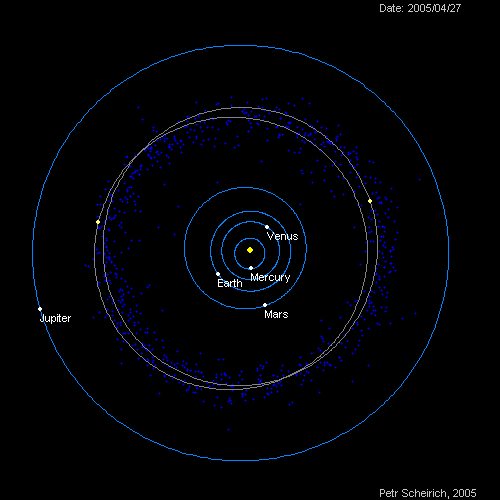HOLD ON, LITTLE BUDDY...
I know last time we met I said "Lets go crazy an create the planets of our system :D", well, that is quite true, but there is some restrictions related to planet building around stars...
Remember Part 1?
Stars that are rich in carbon, oxygen and other metals live for some longer amount of time, even tho those elements are no more than 1% in the universe (99.9% of the universe are stars as well) or even less.
This not only means that by mass, nearly 70~75% of the Universe is Hydrogen plus 25~30% Helium, but as far 99% the Universe is made of Stars, obviously they mimic this recipe as well, varying a little bit.
There's the Sun composition bellow:
Then, there is the Solar System planets mass chart bellow:
Saturn and Jupiter are gas giants made of... Hydrogen, plus some ices from Uranus and Neptune which is made of ALSO HYDROGEN with some Oxygen and Nitrogen.
The inner planets, Mercury, Venus, Earth and Mars, make only 1% of the orbiting mass around the Sun, they are made of metals. The other 99% is Gas and Ice giants.
As we can clearly see, the Sun mimics the Universe composition, and the Solar System planets kinda mimics the Sun's recipe.
As from research (http://jtgnew.sjrdesign.net/solsys_sun.html):
Because the sun is well over 99% of the mass of the solar system, the
sun's composition is effectively the solar system's composition, as
well.
Individual objects, however, do vary from the solar composition,
with some specific elements enriched relative to others (for example,
even though silicon is a much smaller component of the sun than carbon,
silicon is highly enriched in Earth's crust relative to carbon)
So, if a star lacks any Oxygen, Iron or Sodium in its spectrum, there is NO REASON why these elements should appear in the planets of its system.
Another conclusion we can take of is that, Metal-Rich stars, ie, the ones with a large Metallicity index can have denser and larger planets made of those materials rather than the ones with smaller index.
The index works in the following logarithmic power of 10:
Sun is 10¹ in metals. Ie, near 1,8% by mass of the Sun is metals (non-H/He).
Star that is 10^+1, is 10% by mass made of metals.
Star that is 10^-1, is 0,1% by mass made of metals.
Star that is 10^-2, is 0,01% by mass made of metals.
The first stars might had -6 index, less than 0,000001% or none by mass made of metals.
The Red Giant Arcturus in Boötis, have index of −0.52, ie 30% of the Sun's metal index, in other words, nearly ~0,54% of Arcturus by mass is made of metals.
As we can also deduce, cool stars like red dwarfs do not produce enough energy to rapid intense fusion, so, like we find in gas giants, we may find molecules like silicates, ammonia and methane vapor in its atmosphere spectrum, on the other hand, in violent fast living stars, most of those elements are in mono-atomic plasma state, ie, instead of silicate compounds, there is free Oxygen and Silicon in spectrum.
This turn out to be true as we observe the spectrum of metal-rich stars and metal-poor stars.
The darker line is from a star called Pristine-221, as you can see, its spectrum has peaks at Hydrogen and at Calcium lines but it remains pretty continuous, in contrast, our Sun has varied peaks from various metals, including a great prominence in Hydrogen/Helium ones.
We can see lack of any metals in Pristine-221, carbon-free almost, and it is very unlikely this star ever has/had any planets.
We can see now see WHY we choose stars F to M as candidates for harboring planets with life.
The exact proportion for our star is 99.8% of the system mass is the Sun, and the other 0,2% are the planets.
Lets call this ~0,25% value our SOLAR AVERAGE.
And take the 1% as MAXIMUM MASS OF PLANET SYSTEM.
Well, given what we now know about stars, and the physics of whatever system they may have, lets go to some examples:
Your star is a Red Dwarf with 450x the mass of Jupiter, the largest a system can get around it is ~1%, or 4,5 Jupiter masses in total mass. Solar Average is 1,1 Jupiter mass
Your star is a Orange dwarf with 0,75 the mass of the Sun, the largest a system can get around it is ~1%, or 7,5 Jupiter masses in total mass. Solar Average is 1,8 Jupiter mass.
For reference, Jupiter and the Sun are roughly the same density (same materials duh), 1 mass of Jupiter is equal to 0,001 Solar Mass.
Expect the summarized mass of your comets and asteroids max out at 15% the mass of the Moon. For reference, all asteroids in the Solar System are 4%.
Use what you've learned here to check IN and
- M.O. Valent, 19/02/2019









No comments:
Post a Comment